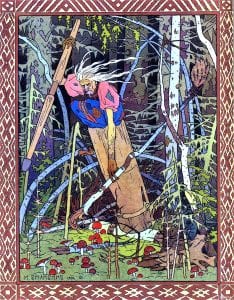A powerful figure in Slavic folklore, Baba Yaga is often portrayed as a crone dwelling deep in the woods in a chicken-legged hut or flying through the air in her mortar holding a pestle. A potent character, there are as many Baba Yagas as there are Baba Yaga stories.
Existing on the margins, Baba Yaga ushers in both life and death, deals out both good and bad. Baba Yaga has also endured as a symbol of female empowerment and continues to inspire writers and capture the imagination of readers today. Just this year, there have been a handful of new titles inspired by Baba Yaga.
In Olesya Salnikova Gilmore's debut The Witch and the Tsar, we find Baba Yaga in 16th-century Russia helping Anastasia, the wife of Ivan the Terrible, who is being poisoned by an unknown assailant. Vividly weaving Russian history and myth, The Witch and the Tsar is a bewitching reimagining that will appeal to both fans of historical fiction and fantasy.
Nethercott's modern fairytale Thistlefoot is set in the present and features the estranged Yaga siblings, Bellatine and Issac. The pair are residing separately in America when they learn they are to inherit Thistlefoot, a magical house on chicken legs, but the Longshadow Man has been seeking to destroy Thistlefoot since 1919. This ambitious, shape-shifting tale weaving Jewish and Eastern European folklore will appeal to fans of Neil Gaiman's work.
Baba Yaga is also the inspiration for a recent collection of short stories, Into The Forest: Tales Of The Baba Yaga, that fans of horror and folklore will enjoy.
If you are interested in the practice of witchcraft and ancient Slavic magical practices, check out Baba Yaga's Book of Witchcraft by practitioner Madame Pamita.



Add a comment to: Baba Yaga Endures